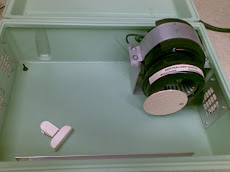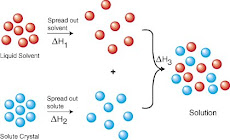ADD TO 1 QUART EMPTY BOTTLE, HALF CUP DISHWASHING LIQUID, HALF CUP OF ANTISEPTIC ALCOHOL ( ISOPROPYL ALCOHOL), 1 QUART OF CUP OF VINAGER AND TWO TABLESPOONS OF LEMON JUICE. ADD FINALLY WATER TO FILL THE BOTTLE AND SHAKE; ........ YOUR GLASS CLEANER IS READY.
sábado, 20 de marzo de 2010
Rapid and quick measure of Chlorine content
Chlorine photometer kit
The eXact® Chlorine Photometer Kit, the latest product from Industrial Test Systems, directly tests Free and Total Chlorine at an expanded range of 0.01-11.0 ppm. The photometer uses a patented method using eXact® Micro reagent strip technology, eliminating the need for powders, tablets, and liquids. It provides results without the guesswork of color matching and meets 4500-CL-G requirement. The waterproof meter (IP-67) fits comfortably in your hand, has a built in sampling cell and comes with a five year warranty.
Industrial Test Systems Inc.
Rock Hill, SC
Tel: 800-861-9712 Web: www.sensafe.com
Taken from Water World Magazine, march 2010 edition
DESALINATION; The best alternative when potable water is too expensive to find
Desalination
A modular desalination and water purification system – originally designed for the US Military and disaster relief – is now available for municipalities. Available from Global Water Group, the system combines desalination using reverse osmosis (RO) technology with a second modular unit that employs the company's proprietary LS3 process for fresh water purification. Units are available in many different sizes, configurations and housings, and they can process volumes ranging from 25 gallons of potable water per hour to as much as 11,000 gph from seawater in one module.
Global Water Group Inc.
Dallas, TX
Web: www.globalwater.com
taken from WATER WORLD Magazine, March 2010 edition.
miércoles, 17 de marzo de 2010
THEORY OF FOAM CONTROL IN WATER BASED SYSTEMS
Taken from the Paints Magazine at the following link: http://www.pcimag.com/Articles/Article_Rotation/BNP_GUID_9-5-2006_A_10000000000000724034
Mechanisms for Combating Macro and Microfoam in Low-VOC Waterborne Systems
by Charles S. Douglas
Markus Hallack
Wernfried Heilen
Christopher Howard
Heike Semmler
January 1, 2010
In the early 1980s, the domestic ink and coatings industry began a major effort to provide products that would help coatings manufacturers lower VOC emissions. The industry used a number of approaches including, but not limited to, exempt solvents, increased solvent capture by the coatings formulators and water-based coatings.
Each approach had positive and negative considerations. Using solvents exempt from the EPA Method 24 calculations lowered VOC output but proved of little use due to limited solubility with certain resins. Use of solvent capture equipment was, and is a viable option but is constrained by the high capital and maintenance costs. Partially driven by innovations at that time, water-based systems presented the most economical means of compliance with evolving VOC and HAPS (hazardous air pollutants) regulations. However, the resins and emulsions used for these systems require surfactants (soaps) to make them compatible in an aqueous medium. Unfortunately, these additives, plus others used to enhance properties like pigment and substrate wetting, contribute to foam formation within inks and coatings.
Today, the need to lower emission levels even further – combined with multiple-purpose raw materials – creates an even greater likelihood of formulating clearcoats that foam. This paper investigates the use of organo-modified siloxane technology to control the proliferation of foam, while maintaining desired properties.
Foam is a mass of gas bubbles stabilized by a surfactant double layer – the foam lamella – within a matrix of liquid film formed in or on the surface of, in this case, an ink or coating. The word “in” refers to microfoam, while the word “on” suggests macrofoam (Figure 1). Let’s begin by looking at the characteristics of each type.
Macrofoam, found at the surface of a coating, contains bubbles – generally >100 µm– which rise very quickly. According to Stokes’ Law (Figure 1A), the size of the bubble markedly affects its velocity rising through the fluid, which is directly proportional to the radius of the bubble; thus, the larger the bubble, theaster its speed. Stokes’ Law also has a viscosity component: the velocity of the rising bubble decreases as viscosity increases. However, given the rather low application viscosities of water-based inks and coatings, along with their relatively low coat weights and thicknesses, foam should dissipate rapidly absent other contributing factors.(1, 2)
Previously mentioned factors that contribute to foam formation include surfactant packages in the polymer system and functional additives required to address key properties of the coating system. Generally speaking, many classes of defoamer will eliminate macrofoam (Figure 2) in inks and coatings since they are surface-active agents. By spraying the defoamer on top of the liquid film or adding it in the liquid phase, defoamers destroy the foam by acting within the foam lamella and destabilizing it. High-speed incorporation may not be required for this class of defoamers
Microfoam (Figure 3), on the other hand, becomes entrained within the liquid film because its small-radius bubbles do not rise fast enough to the surface. According to Stokes’ Law, these bubbles – typically 10 to 100 µm – rise infinitely more slowly than macrofoam in the same viscosity liquid. Consequently, because it remains entrained, microfoam causes numerous problems in post-cured film. Formulators must employ a very specific type of foam destabilization additive to remove microfoam from water-based surface coatings.
Many products on the market claim to eliminate foam from aqueous-based systems (Figure 4). Their performance relies on characteristics such as incompatibility, low surface tension, hydrophobic nature and other mechanisms to either prevent or destroy the foam lamella, or both.
In general, defoamers consist of several compounds, which, in total, are not compatible with the coatings system. If defoamers are too compatible with the system, problems arise, e.g., over time they become inefficient. However, if they are too incompatible with the system, the defoamers may be highly efficient bubble busters but will cause problems in the applied film. The ideal solution, then, is to balance compatibility and incompatibility for maximum efficiency.
Destabilizing agents are multi-component additives with varying groups of functional materials. There are three principal classes of components: carriers, representing 75-90% of the formulation; hydrophobic ingredients, ranging from 5-10%; and other special substances (e.g., biocides, thickeners, emulsifiers) representing 0-20%.
The purpose of the carrier is to spread on the surface and remove the layer of surfactant molecules. Therefore, it has a lower surface tension than water. Another important property of the carrier is to supply a means for the hydrophobic ingredients of the destabilizing package to reach the surfactant double layer. The carriers also have to be insoluble and incompatible with the solvent (water) to rise to the surface. The monolayer formed by the defoamer ingredients will have a lower surface elasticity compared to that of the foam bubble’s double layer. Oils can be the carriers for destabilizers. Mineral oils are the most versatile and least costly. Paraffinic (medical white) oils meet health regulations (FDA). In addition, vegetable oils, silicone oils, polysiloxanes, organo-modified siloxanes and water can all be used as carriers. Fatty acids, fatty alcohols and polyvinyl ethers are used as well.
A defoamer’s hydrophobic ingredients can be used either in liquid or solid form. In liquid form, they exist as emulsion droplets (Figure 5).
Particle size of hydrophobic materials is an important factor in penetrating the surfactant double layer (Figure 6). They must be between 0.1 and 20 µm. Too small a particle size significantly reduces effectiveness because water can enter the double layer and dilute the concentration of defoamer particles. If the particle size is too big, the particle cannot penetrate the double layer and the micro bubbles will not collapse into macro bubbles, which more easily burst on the surface. An important task of a hydrophobic ingredient is to absorb surfactant molecules from the double layer, thereby generating an increase in surface tension that facilitates spreading and the ultimate rupture of the foam lamella. The total concentration of hydrophobic particles in a defoamer formulation is limited due to the fact that the total concentration of surfactant molecules must be kept within a certain range to avoid destabilizing the coating emulsion. Compounds used as hydrophobic particles include waxes, fumed silica, metal soaps, polypropylene glycols, amides and polyurethanes.(3, 4)
Microfoam Issues
Several defoaming mechanisms readily dissipate macrofoam, but microfoam is different and a complex issue that requires addressing. Owing to its small bubble size, microfoam is generally not visible to the naked eye but its negative effects on a dried coating cannot be missed: surface defects, color control and clarity/haze.
Perhaps the most noticeable surface defect caused by microfoam is pinholing. On substrates that require a more homogenous coating for barrier properties, microfoam creates an avenue for environmental contact that can lead to weathering, deterioration or corrosion damage. Because microfoam is difficult to eliminate with traditional defoamer additives, new and different technology must be employed. The study that follows focuses on a foam destabilizer technology that uses polyether-modified siloxane chemistry with a hydrophobic component, hereafter referred to as a deaerator.(1,5-6)
The program to optimize the deaerating performance of polyether-modified siloxane explored the effects of adjusting a number of variables:
A.1 – Polarity – hydrophilic-lipophillic balance (HLB);
A.2 – Degree of polymerization (DP);
A.3 – Organic-siloxane ratio; and
A.4 – End blocking.
In this case, adjusting the HLB characteristics of substance Class A achieved significant improvements in deaeration. Varying the molecular weight changed the HLB character of some of the products shown in Figure 8. Organic modification changes of the products were also performed and the effects on microfoam elimination were tested.
Test results depicted in these micrographs clearly show that a product with strong hydrophobicity will not necessarily produce the best results (Figure 8). For efficient elimination of microfoam, a critical balance between hydrophilicity and hydrophobicity must be struck, as seen in the test coating system with substance A.1 (Figure 8).
To provide easier dispersion in a coating system, the active ingredients of the deaerator A.1 can be compounded in distinct forms: emulsion in water stabilized by surfactants; concentrate with 100% active matter; and dilution in glycols or glycol ethers.
The initial evaluation used the concentrate form of substance A.1; therefore, the next compositions created for testing were the emulsion and the dilution in glycol ether (Figure 9). The active ingredients in these two forms were equilibrated to deliver the same total amount of active matter in each test formulation. Comparing the micrographs in Figure 9, the concentrate version of A.1 undeniably provides superior microfoam dissipation.
A number of explanations exist for the lack of efficiency shown by the emulsion and the diluted variants, but the prevalent theory is that the non-concentrate forms of delivery have a higher solubility characteristic. Less of the active component reaches the liquid-air interface and cannot act on the foam lamella.(7)
This stage of the testing compared two versions of the same concentrate of Substance A.1: one without hydrophobic particles (A.1.1), the other with fumed silica hydrophobic particles (A.1.2). Micrographs of the two inks formulated with these products are shown in Figure 10. The performance of A.1.2 in Figure 10 clearly illustrates the value of including a hydrophobic component to increase foam destabilization efficiency.
Conclusion
Deaerators designed on an organo-modified silicone platform – more specifically, a silicone polyether containing hydrophobic moieties – provide superior macro- and microfoam suppression capabilities.2 In this study, TEGO® Airex 901W and Airex 902W have proven to be the most effective additives for dissipating microfoam in aqueous-based inks and coatings that contain high surfactant levels. Further investigation in numerous inks and coatings provided additional evidence that Airex 901W and Airex 902W are ideal choices in systems where it is difficult to eliminate both macro- and microfoam. (See suggested formulations in the Appendix.)
As the coatings market moves to more environmentally friendly systems that demand practically zero percent solvent usage, foam problems will be part of the equation. It will require joint efforts between the coating manufacturers, as well as additive suppliers, to continue the design and optimization of future eco-friendly products.
Appendix - Selected Formulations
References
1. Evonik Tego Chemie Service GmbH: Tego Journal 2007, 53-59.
2. US Patent 6045219 - Pigmented ink jet prints on gelatin overcoated with hardeners.
3. Adams; Vltasvsky; Heilen. The battle against the bubble. American Paint and Coating Journal 1990, 22, 32-34.
4. Streefland, W. Ink foaming of water-based inks, what is the reason and can it be resolved? FlexoTech News 2006, 9, 2-3.
5. Kleinsteinberg; Struck. Dealing with Foam Generated During Printing Ink and Varnish Production. Ink World 2006, 10.
6. Schwartz; Bogar. An additives approach to defect elimination in thermoplastic water-based industrial maintenance coatings. Journal of Coating Technology 1995, Vol. 67, No. 840.
7. Semmler and Heilen, “A New Approach to The Elimination and Prevention of Micro-foam in Water-based Wood and Furniture Coatings,” (Internal Document: Evonik Industries).
8. Kukackova, A. Using the Si-O Strength. European Coatings Journal 2007, Vol. 6, 54-59.
lunes, 15 de marzo de 2010
NEW DEFOAMER FOR WATER TREATMENT PLANTS
New Product: Microcat®-DF
A new defoaming liquid, known as Microcat®-DF Biodefoamer has been introduced by
Bioscience, (http://www.bioscienceinc.com/). The synthetic material can be used in aeration tanks, sludge digesters and other
wastewater treatment plant process facilities to suppress foam without inhibiting the biomass or
having other side effects of conventional defoamers.
Because Microcat-DF does not contain silicones, mineral oil, nitrogen or phosphorus
compounds, it is compatible with all Microcat microbial-enzyme formulations and with naturally
occurring biomass.
WWTP foams may result from filamentous bacteria
infestation, rapid temperature or pH fluctuations,
influent composition changes or shock loading. It can
also occur at plant start-up.
Infestation with filamentous micro-organisms, such
as Nocardia or Microthrix is often a symptom of
excessive fat, oil and grease (FOG) in the influent
wastewater. In this case, use of Microcat-DF with
Microcat-XF filament controller or other Microcat
products for digesting FOG, provides an economical
"green" solution to foaming problems, while also
reducing Nocardia that inhibit settling and produce poor effluent quality.
Microcat-DF is generally metered continuously into the foam source. The liquid has a shelf life
of two years without settling.
domingo, 14 de marzo de 2010
THE STANDARD COMPOSITION FOR TODAY'S ANTICORROSIVE COATINGS
For more than 100 years, the accepted system for anticorrosive coatings was a combination of lead based paints and oil alkyd layers.
A significant improvement was attained in the 1970s with the introduction of three-coat, high performance system based on zinc-rich primers, pigmented intermediates and light stable polyurethane topcoats for the industrial maintenace market. This three coat system is now the standard anti-corrosive coating system around the world, providing outstanding protection, chemical resistance and weatherability to bridges, petrochemical facilities, power generating plants, waste/water tretment facilities and industrial construction structures.
TRANSFORMING GRASS INTO PLASTICS
More and more attention is focusing on developing processes to make biofuels and biochemicals from non-food crops and cellulosic wastes. A leader in such efforts is Biofine Renewables, Waltham, Mass.
Since 2007, the company has operated a demonstration plant in Gorham, Maine, that's successfully converted cellulosic biomass feedstock into levulinic acid intermediates used in a variety of chemicals, plastics and fuels.
The good news is that everywhere there is immediate access to a low-cost feedstock that's high in cellulose, such as waste wood pulp. Today, though, such a material generally poses burdens not benefits.
The company's technology promises to change that. "Instead of having to pay to haul the waste away or just burning it in a boiler, they can convert it into chemical intermediates that have high values," Fitzpatrick, a company's speaker notes. "The process also generates a byproduct called lignin that can be burned to provide energy to the plant or nearby consumers." (Academic and commercial research underway may lead to use of lignin as a biochemicals feedstock or as non-biodegradable soil amender.)
New meaning to "magnetic" stirring
A new approach to using magnetism for mixing provides a simple and robust way to achieve instantaneous and homogeneous mixing at any scale, say its developers at Sandia National Laboratories, Albuquerque, N.M. The technique avoids agitators or other mechanical parts contacting fluid. Instead, it relies on magnetizable particles suspended in the fluid forming chains and then swirling to create effective mixing throughout the fluid. When mixing is done, a magnet can quickly and completely remove the particles, which can be reused, notes Jim Martin, a materials scientist at Sandia.
The method, called vortex field mixing, subjects particles to a rotating magnetic field with a precession-like motion. This causes the particles to assemble into a multitude of microscopic chains that follow the field motion and stir the entire volume of fluid regardless of the complexity its shape (Figure 1). (A YouTube video showing the mixing can be downloaded via http://www.youtube.com/watch?v=_2izq-XOvlg.)
jueves, 11 de marzo de 2010
SMART POLYMERS, The "Chameleon" principle
These very to-date technological advances in polymer science were taken from the American Coatings Show in Carolina, see www.american-coatings-show.com
By: Sergiy Minko, Clarkson University
Stimuli-responsive macromolecular nanostructures are capable of conformational and chemical changes upon “receiving an external signal” such as a change in temperature, chemical composition, applied mechanical force, irradiation with light, or exposure to an electrical or magnetic field. The changes at the molecular level are accompanied by variations in physical properties at a macroscale. These principles were explored in the development of reconstructable surfaces. Reconstructable surfaces change their wettability, permeability, and adhesive, adsorptive, mechanical, and optical properties. Various applications extend to materials with rapidly switchable adhesion (from sticky to nonsticky) and wetting (from wettable to non-wettable), with switchable appearance and transparency, and coatings capable of rapid release of chemicals, as well as self-healing coatings.
Reconstructable polymer surfaces form a toolbox for the rapidly developing field of smart coatings. The structure of the coatings can be programmed in the formulation. After deposition, external stimuli affect the spatial arrangement of the ingredients and direct the assembly of the coating with programmed properties.
By: Brij Mohal, Evonik
Smart coatings are often referred to as structured coatings which provide additional benefits by giving an appropriate response to outside conditions. There has been much talk about self-healing or super hydrophobic and hydrophilic coatings, to name a few. More examples will be given in this session, comprising dirt resistant coatings, as well as stimuli responsive polymeric polymers acting on demand. Other interesting developments are anti-fog coatings and the use of natural materials in order to achieve functionality.
By: Jamil Baghdachi, Eastern Michigan University
Introduction: Surface coatings function to protect or improve the appearance of a substrate or both. No matter how carefully the coatings are designed, manufactured and applied, all will eventually fail through some type of force in excess of the tolerance level of the coating or its ingredients. Failure of a coating system occurs by any number of failure modes and can often be attributed to a number of root causes including coating degradation, mechanical damage, or polymer fatigue upon service and exposure to elements of weather.
The concept of self healing materials has drawn significant attention of researchers all over the world.1-10 Self-healing and self-repair concept, using both organic and inorganic materials have been applied to composites, plastics, concrete, adhesives, artificial skin, and most recently to functional coatings.
In an effort to mimic self-healing functions in living systems, we have the developed polymeric coating systems that are stimuli responsive. The most attractive feature of this system is that the factors that damage the coating the most, such as humidity, exposure to high temperatures etc., are the same factors that initiate self-healing phenomenon (Figure 1). This property is unique since the extent of the healing is proportional to the magnitude of the damage, i.e., release on demand.
martes, 9 de marzo de 2010
HOW TO FORMULATE AN ANTI-ITCH CREAM
Dermatitis, Irritation and Eczema to the skin all cause eruptions, inflammation and itching. This last effect is probably the most annoying . Here is a simple and quick formula to temporary relief it:
Ingredients %Wt
Cetearyl Alcohol(and)
sodium Cetearyl sulfate.... 15.0
Salicilyc acid............. 0.4
Menthol ................... 0.3
Water ..................... 84.3
Put water in a container and heat to 70 Deg C. In a second container melt the Cetearyl ingredient at 70 Deg C and add the salicylic acid and the menthol with mixing, then add this blend to the water with stirring and allow to cool.
(taken from Happy.com, Feb 2010)
lunes, 1 de marzo de 2010
CHEMICAL CARTOONS

Taken from "Chemical Processing Magazine" :
"I don’t think that is what the boss meant when he said you needed to 'start walking the line.'" Submitted by Mervin Archer; Grove, Okla.
"Bob, you can't do a halfpipe, unless it's snowboard." Submitted by J.F. Kemiska
"Teddy Roosevelt didn't mean that when he said 'Carry a big stick.'" Submitted by Bob Beck; Pompton Plains, N.J.
Polymer Science applied to the Chemistry of Muscle Movement
All body movement depends on organic chemistry reactions or electrophysical chemistry. Muscle movement is an example.
The first molecular theories, which appeared in the '30's, were based on polymer science. They proposed that there was a rubber-like shortening of myosin filaments brought about by altering the state of ionization of the myosin. This aberration was corrected by the seminal works of HE Huxley (Huxley and Hanson 1954) and AF Huxley (Huxley and Niedergerke 1954) which showed that sarcomeres contained two sets of filaments (thick and thin) which glided over each other without altering their length. Hasselbach showed that the thick filaments contain the protein myosin. The question naturally arose; what made the filaments glide? Projections from the thick filaments, the myosin cross bridges, were discovered by electron microscopy (Huxley 1957; Huxley 1958) and subsequently shown both to be the site of the ATPase and also to be the motor elements producing force and movement between the filaments. Two conformations of the cross-bridge could be detected in insect flight muscle (Reedy et al. 1965). Progress was then rapid so that at a historic Cold Spring Harbor Symposium in 1972 the outline of the molecular mechanism of muscle contraction could be enunciated. The cross bridge was thought to bind to actin in an initial (90°) conformation, go over to a angled (45°) conformation and then release (Huxley 1969) (Lymn and Taylor 1971). For each cycle of activity one ATP would be hydrolyzed. The actual movement could be measured by physiological experiments on contracting muscle and was shown to be about 80-100Å (Huxley and Simmons 1971). Since the cross-bridge was known to be an elongated structure, such a distance could be accommodated by a rotating or swinging cross-bridge model (Fig 2) .
Why did it take so long to work out?
To understand the chemical events which drive muscle one needs to know the protein structures involved at atomic resolution. Muscle is made of massive arrays of macromolecules. How does one get data from such systems? A great deal of technology has been invested in this problem, which has also driven technology. Some early insight was provided by light microscopy. However, the first radical new insight came from electron microscopy. More recently, the structures of the component molecules have been determined x-ray crystallography at atomic resolution. These results now allow us to describe in some detail how the hydrolysis of ATP by the component proteins actin and myosin leads to movement. An understanding of muscle contraction is an important example of the success of protein crystallography, in particular when used in conjunction with high resolution electron microscopy.
NEWS ON CHEMICAL PRICES
Oil, Gas and Derivatives (Feedstocks)
Oil: A brief retreat from $80/ barrel this week yet today prices have pushed up considerably and pricing is once again fliriting with $80/ barrel.
Nat. Gas: Nat. Gas traded lower this week, starting around $5/ mmbtu getting as low as $4.75/ mmbtu and currently at $4.80/ mmbtu.
Ethylene: The ethylene market has been extremely active with February trading at $.565 cts/ lb, March at $.60 cts/ lb and April at $.5575 cts/ lb.
Benzene: Benzene has moved slightly lower this week ending at $3.27- $3.32/ gallon for March. We expect a slight decrease in the contract Benzene price from March.
Orthoxylene: March settled at $.47/ lb and based on nominations we expect a slight increase of 2-3 cpp for April.
Propylene: Refinery Grade Propylene is trading lower than the March settlement which increased a whopping 6.5 cpp. over January but Polmer grade is still trading in excess of the settlement. Ammonia: Pricing remains quiet at $275/ met ton yet forward price ideas are higher.
Chemicals
Methanol: Barge Pricing will "roll" into March at US$1.10/ gallon, spot has moved up to the high $.90's per gallon on news of an explosion at Petronas and other production issues. the Chinese holiday has ended and the spot market was not nearly as affected by the lack of demand during the holiday season as we saw last year.
Urea: Global pricing has escalated sharply as we enter a high demand season for Urea. Pricing has moved up steadily over the last few months.
Plasticizers: Feedstock pressure continues on price and another round if increases is slated for 3/1/10. DINP and DOP are considered tight as some operational issues are noted (2-EH) and Asian demand for ester and alcohol is ravenous.
Adipic Acid: Availability is limited pushing prices up and leaving some consumers struggling to keep inventories. A US major will bring down their only plant in the coming weeks further reducing availability in an already tight market.
Maleic Anhydride: Briquettes are selling at a premium if available. BASF's rationalization in Europe has radically affected the MA balance globally despite an overcapacity in NA. Molten material has moved on increased butane costs over the last couple of months yet due to the overcapacity spot deals are noted.
Vistas de página en total
GREEN CHEMICALS
Also the materials have to meet with toxicity and health requirements regarding inhalation, dermal and eye contact. There is also a specific list of materials that are prohibited or restricted from formulations, like ozone-depleting compounds and alkylphenol ethoxylates amongst others. Please go to http://www.greenseal.com/ for complete information on their requirements.
For information on current issues regarding green chemicals, see the blog from the Journalist Doris De Guzman, in the ICIS at: http://www.icis.com/blogs/green-chemicals/.
Certification is an important — and confusing — aspect of green cleaning. Third-party certification is available for products that meet standards set by Green Seal, EcoLogo, Energy Star, the Carpet & Rug Institute and others.
Manufacturers can also hire independent labs to determine whether a product is environmentally preferable and then place the manufacturer’s own eco-logo on the product; this is called self-certification. Finally, some manufacturers label a product with words like “sustainable,” “green,” or “earth friendly” without any third-party verification.
“The fact that there is not a single authoritative standard to go by adds to the confusion,” says Steven L. Mack M.Ed., director of buildings and grounds service for Ohio University, Athens, Ohio.
In www.happi.com of June 2008 edition, there is a report of Natural formulating markets that also emphasises the fact that registration of "green formulas" is very confused at present, due to lack of direction and unification of criteria and that some governmental instittion (in my opinion the EPA) should take part in this very important issue.










































